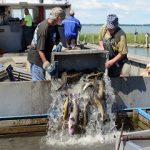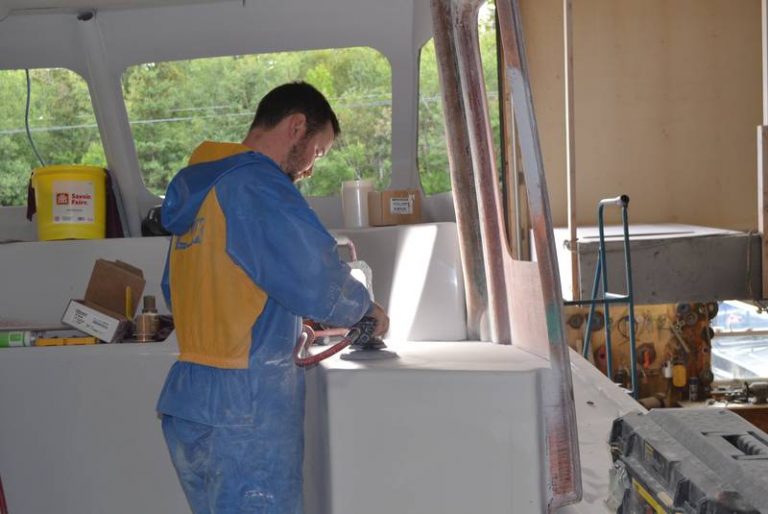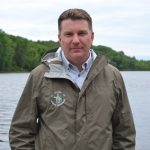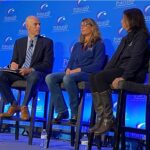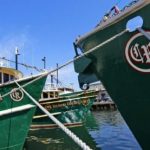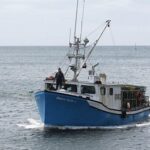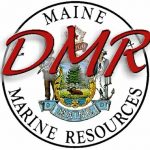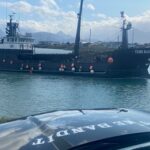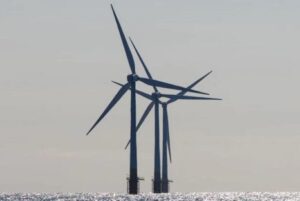Monthly Archives: February 2017
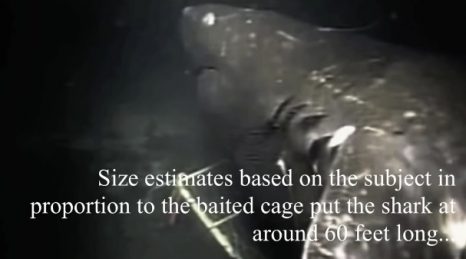
Massive monster sharks ‘as big as two buses’ still roaming seas, claim experts
Megalodons are huge prehistoric sharks measuring a massive 18 metres in length with razor sharp seven-inch teeth. That makes them almost twice as long as the average bus. Fossils of the gigantic beasts suggest the megalodon resembled a larger version of the modern day great white shark. But some accounts appear to prove that the real-life Jaws still exists today. Dr Karl Shuker, a leading cryptozoologist, has dedicated his life to finding and researching animals thought to be extinct or non-existent. “Unusually large, unidentified sharks are still being reported from time to time.” A video which surfaced in 2016 shows what looked like a 60-foot shark illuminated in the darkness of the sea. It was apparently filmed in the Japan’s Suruga Bay, deep down in the ocean beyond the reach of sunlight. The video sparked speculation that these absolutely massive behemoths could still be in the seas today. Video, Read the story here 11:54
Greenpeace Criticizes Contracting Onboard Monitoring Cameras and Analysis to Trident
 Should a commercial fishing company be made responsible for monitoring what goes on board the commercial fishing vessels? Greenpeace leader Russel Norman says, it is like “the fox guarding the henhouses”. Greenpeace has criticized Ministry for Primary Industries for rolling out cameras on fishing vessel which is supplied as well as monitored by Trident for the fishing industry. The company is owned by Sanford and thirteen other seafood and fishing companies in New Zealand. The news was confirmed by Nathan Guy, the minister for MPI. So it is clear that indeed the fishing industry is responsible for analyzing the video surveillance that comes from its own trawlers and reports any suspicious behavior to the regulators. Executive Director of Greenpeace New Zealand, Russel Norman says that makes things worse as the government has given out the contract and analyzing task to the industry with Nathan Guy and Prime Minister John Key defending it. link 11:17
Should a commercial fishing company be made responsible for monitoring what goes on board the commercial fishing vessels? Greenpeace leader Russel Norman says, it is like “the fox guarding the henhouses”. Greenpeace has criticized Ministry for Primary Industries for rolling out cameras on fishing vessel which is supplied as well as monitored by Trident for the fishing industry. The company is owned by Sanford and thirteen other seafood and fishing companies in New Zealand. The news was confirmed by Nathan Guy, the minister for MPI. So it is clear that indeed the fishing industry is responsible for analyzing the video surveillance that comes from its own trawlers and reports any suspicious behavior to the regulators. Executive Director of Greenpeace New Zealand, Russel Norman says that makes things worse as the government has given out the contract and analyzing task to the industry with Nathan Guy and Prime Minister John Key defending it. link 11:17
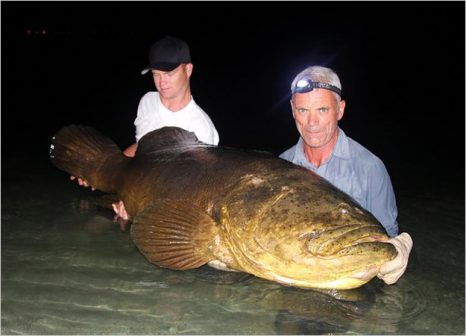
Will Florida allow goliath grouper fishing?
State wildlife officials will discuss the fish’s fate when the Florida Fish and Wildlife Conservation Commission (FWC) meets Feb. 8-10 in Crystal River. There is no specific proposal yet to allow the goliath’s harvest. At Wednesday’s meeting, FWC staff will provide the commission a review of the biology and recently-completed study of the fish’s population. “This is a review and discussion on the history, biology and recent stock assessment,” Amanda Nalley, an FWC spokeswoman said by email. “FWC will be asking the Commission whether or not staff should pursue gathering further public input on potential management changes, including the possibility of allowing some kind of limited harvest.” Read the story here 10:57
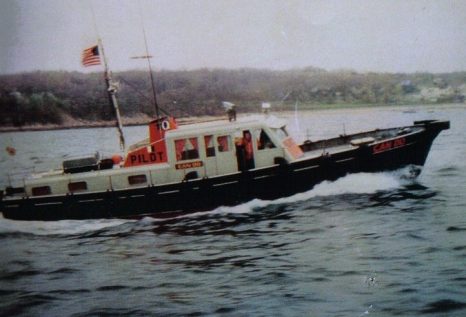
Blizzard of ’78 foiled a rescue at sea in little-known tale
On the night of Feb. 6, 1978, more than a few afternoon commuters were still stuck in their cars in Providence in the midst of the strongest blizzard to hit the Northeast in 150 years. And just off the New England coast, mountainous waves, produced by the same storm system, crested at heights of 40 feet. Winds blowing off those waves hit speeds of 115 miles per hour. The stage was set for a high-seas drama that wouldn’t rate much attention in the next day’s editions of The Providence Journal and The Boston Globe, according to Massachusetts native Michael Tougias, an author who was to speak at the Providence Boat Show on Sunday, close to Monday’s anniversary of the great blizzard. Tougias’ story, based on his own book, offers an oceanic perspective on the great blizzard. He constructed it with dramatic dialogue from 10 hours of taped marine radio communications. Not long after then-Gov. J. Joseph Garrahy declared a state of emergency in Rhode Island, a pilot boat left its berth in Gloucester, Massachusetts, on a mission to help a Coast Guard vessel that had lost its way in the roiling seas near the entrance to Salem Sound. The pilot boat, named the Can Do, set out to accomplish an impossible task. Read the story here 08:44
Remembering the pilot boat ‘Can Do’ – from
NOAA Says Its Hot As Ever? A NOAA Whistle Blower Turns The Heat Up On Them!!
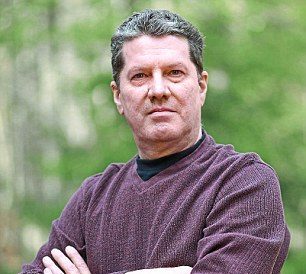 A high-level whistleblower has told this newspaper that America’s National Oceanic and Atmospheric Administration (NOAA) breached its own rules on scientific integrity when it published the sensational but flawed report, aimed at making the maximum possible impact on world leaders including Barack Obama and David Cameron at the UN climate conference in Paris in 2015. The report claimed that the ‘pause’ or ‘slowdown’ in global warming in the period since 1998 – revealed by UN scientists in 2013 – never existed, and that world temperatures had been rising faster than scientists expected. But the whistleblower, Dr John Bates, a top NOAA scientist with an impeccable reputation, has shown The Mail on Sunday irrefutable evidence that the paper was based on misleading, ‘unverified’ data. It was never subjected to NOAA’s rigorous internal evaluation process – which Dr Bates devised. The report claimed that the ‘pause’ or ‘slowdown’ in global warming in the period since 1998 – revealed by UN scientists in 2013 – never existed, and that world temperatures had been rising faster than scientists expected. Launched by NOAA with a public relations fanfare, it was splashed across the world’s media, and cited repeatedly by politicians and policy makers. Read the full story here 20:55
A high-level whistleblower has told this newspaper that America’s National Oceanic and Atmospheric Administration (NOAA) breached its own rules on scientific integrity when it published the sensational but flawed report, aimed at making the maximum possible impact on world leaders including Barack Obama and David Cameron at the UN climate conference in Paris in 2015. The report claimed that the ‘pause’ or ‘slowdown’ in global warming in the period since 1998 – revealed by UN scientists in 2013 – never existed, and that world temperatures had been rising faster than scientists expected. But the whistleblower, Dr John Bates, a top NOAA scientist with an impeccable reputation, has shown The Mail on Sunday irrefutable evidence that the paper was based on misleading, ‘unverified’ data. It was never subjected to NOAA’s rigorous internal evaluation process – which Dr Bates devised. The report claimed that the ‘pause’ or ‘slowdown’ in global warming in the period since 1998 – revealed by UN scientists in 2013 – never existed, and that world temperatures had been rising faster than scientists expected. Launched by NOAA with a public relations fanfare, it was splashed across the world’s media, and cited repeatedly by politicians and policy makers. Read the full story here 20:55
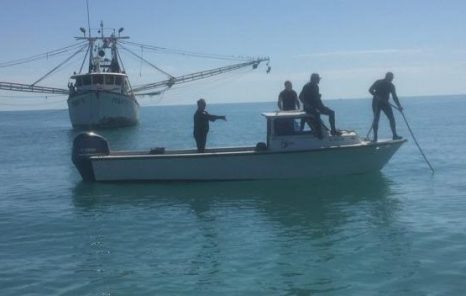
Newly discovered illegal reef off the coast of Lee County impacting shrimpers
An alert for one of Southwest Florida’s biggest industries after an illegal, manmade reef was discovered off the coast of Lee County. A shrimp net worth almost $2,000 was found tangled up in the illegal manmade reef. Fishermen discovered it about 9 miles off the shore of Fort Myers Beach – a place where many drop their nets to catch shrimp. Captain Mark Grunwale with Erickson and Jensen Shrimp Company spends weeks at a time fishing for shrimp with some pretty expensive equipment. “We know where a lot of them are at, but we didn’t know where this one was at,” Capt. Grunwale said. On Friday, divers from the Lee County Sheriff’s Office recovered a shrimp net caught in the illegal reef that not only impacted shrimpers but marine life as well. “There will be no knowing how it got there. This particular site is right in the middle of shrimp trolling lanes when they are coming out of Fort Myers Beach.” The net is believed to belong to a shrimp company out of Texas. Video, read the story here 19:38
All 12 crew members of sunken longliner rescued
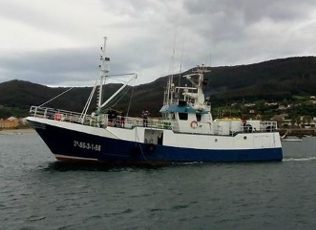 Three helicopters and three lifeboats were launched after a distress signal of the “Gure Uxua” from Cariño (A Coruña), was received on Feb 3, 2017, at 3:26 p.m. upon returning home from fishing grounds off France. An SAR operation startedoff the coast of Luarca extending to Navia. All seven Galician and five Portuguese crew members of the fishing vessel that sank in the afternoon off the northern coast of Spain have been rescued alive by 5.30 p.m. The “Gure Uxua” went down 50 miles off the coast of Navia in Asturias. The crew abandoned ship into a raft. Read the story here 12:53
Three helicopters and three lifeboats were launched after a distress signal of the “Gure Uxua” from Cariño (A Coruña), was received on Feb 3, 2017, at 3:26 p.m. upon returning home from fishing grounds off France. An SAR operation startedoff the coast of Luarca extending to Navia. All seven Galician and five Portuguese crew members of the fishing vessel that sank in the afternoon off the northern coast of Spain have been rescued alive by 5.30 p.m. The “Gure Uxua” went down 50 miles off the coast of Navia in Asturias. The crew abandoned ship into a raft. Read the story here 12:53
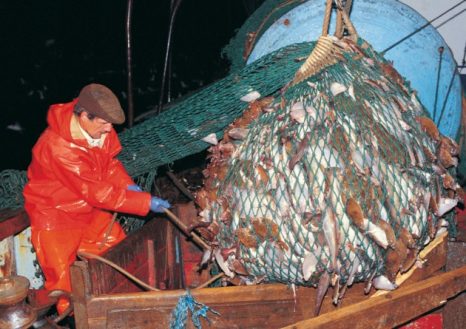
Fishermen fear a catch during negotiations over Brexit
Fishermen around the Kent coast are fearing for the survival of the industry after Brexit as they do not believe the government will deliver a clean break with the EU. The Thanet Fishermen’s Association and Whitstable Fishermen’s Association have thrown their weight behind a 90 page document by Fishing for Leave, an independent campaign aiming for withdrawal from existing EU fishing regulations in order to regain control over the country’s fishing waters and rejuvenate the industry. “When we went into the common market, we had the largest fish stocks and the largest fleet,” explains Mr West, who owns West Whelks on Whitstable harbour. “Now we have the smallest fish fleet and the smallest stocks left as our waters have been abused by other countries. “A lot of people that set the quotas are sitting in an office and haven’t got a clue about how our industry works. We’re told we are allowed to catch haddock, when we haven’t seen a haddock in almost 50 years. Read the story here 12:07
Fish Industry Says Tighter Monitoring Will Hurt Business
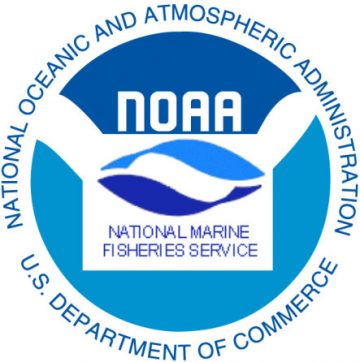 Several seafood and restaurant industry groups sued the National Marine Fisheries Service over its plan to more closely monitor where market-bound fish are coming from to thwart those who profit from illegal catches. In a lawsuit filed in the U.S. District Court for the District of Columbia, (Click here to read the complaint) the plaintiff associations claim the new policy would increase the costs incurred by their members and that those costs would further hurt their businesses when they were, of necessity, passed on to consumers. The fisheries service believes a large amount of the fish and other sea life consumed by Americans is being caught by illegal means or in ways that flout conservation and sustainable fishery management practices. For instance, plaintiff Alfa Seafood, a family-owned seafood importer and distributor located in Miami, Florida, claims they would need to hire three additional employees in order to comply with the Rule, which they say would cost them $195,000 per year, including benefits. If the cost of production were to go up, the cost of fish and other seafood to the consumer would also rise, Alfa says. Read the story here 10:53
Several seafood and restaurant industry groups sued the National Marine Fisheries Service over its plan to more closely monitor where market-bound fish are coming from to thwart those who profit from illegal catches. In a lawsuit filed in the U.S. District Court for the District of Columbia, (Click here to read the complaint) the plaintiff associations claim the new policy would increase the costs incurred by their members and that those costs would further hurt their businesses when they were, of necessity, passed on to consumers. The fisheries service believes a large amount of the fish and other sea life consumed by Americans is being caught by illegal means or in ways that flout conservation and sustainable fishery management practices. For instance, plaintiff Alfa Seafood, a family-owned seafood importer and distributor located in Miami, Florida, claims they would need to hire three additional employees in order to comply with the Rule, which they say would cost them $195,000 per year, including benefits. If the cost of production were to go up, the cost of fish and other seafood to the consumer would also rise, Alfa says. Read the story here 10:53
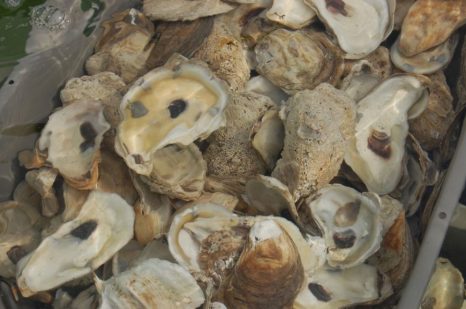
UNH researchers ID bacteria contaminating seafood in seven Atlantic coastal states and Canada.
University of New Hampshire scientists in partnership with the FDA and public health and shellfish management agencies in five states have identified a new strain of a bacterial pathogen that has contaminated seafood, sickening shellfish consumers along the Atlantic Coast at increasing rates over the last decade. N.H. Agricultural Experiment Station scientists have discovered that a Vibrio parahaemolyticus strain identified as ST631 is a predominant strain endemic to the Atlantic Coast of North America and has been traced to shellfish harvested in seven Atlantic coastal states and Canada. ST631 is the second most prevalent strain isolated from patients sickened by product sourced to the Northeast United States. Vibrio parahaemolyticus is the leading seafood-transmitted bacterial pathogen worldwide with an estimated 45,000 infections in the United States every year. It causes gastroenteritis and, rarely, lethal septicemia. The findings were announced in a letter to the editor at the Journal of Clinical Microbiology “Sequence Type 631 Vibrio parahaemolyticus, an Emerging Foodborne Pathogen in North America.” Read the story here 09:31
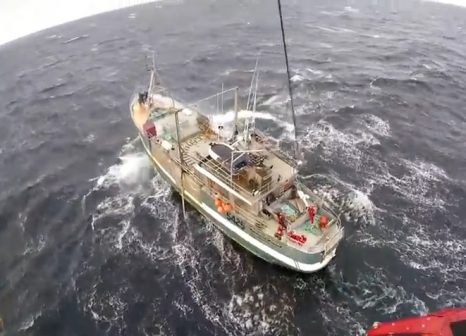
Eight Fishermen rescued from sinking fishing boat near Burin Peninsula
Eight crew on a sinking fishing vessel near the Burin Peninsula were rescued by search and rescue teams on Friday, according to Joint Task Force Atlantic. JTF said Friday night that all eight crew members from a vessel in distress were hoisted onto a Cormorant helicopter about 130 nautical miles south of Burin. The vessel was taking on water, and JTF said Friday night it was abandoned. A spokesperson for the agency said helicopters originally sent three water pumps down to help remove water from the ship, but the group couldn’t keep up with the flooding. No vessel identification is mentioned. Link Watch the video here 08:49
Coast Guard assists fishing vessel taking on water near Fairweather Ground, Alaska
 A Coast Guard aircrew assisted a fishing vessel taking on water with four people aboard in the vicinity of Fairweather Ground approximately 49 miles southeast of Lituya Bay Friday morning. The 53-foot fishing vessel Pacific Star received assistance from Coast Guard aircrews and the good Samaritan vessel Sherrie Marie before getting back underway to Sitka. Watchstanders at Coast Guard Sector Juneau received a report that the 53-foot Pacific Star began taking on water after 9 p.m. Thursday. The captain of the Pacific Star reported taking on water through a hatch on the aft part of the vessel. All donned survival suits and proceeded toward Lituya Bay. Sector Juneau issued an Urgent Marine Information Bulletin and launched two aircrews to assist, one Air Station Sitka MH-60 Jayhawk crew and one HC-130 Air Station Kodiak crew. The tug Bering Titan was about 19 miles south of the Pacific Star’s position and escorted the vessel in case the situation deteriorated. At approximately 10 p.m. Thursday, while on scene, an Air Station Sitka MH-60 Jayhawk crew lowered a dewatering pump to the Pacific Star. The captain reported that pumps were keeping up with the flooding and decided to continue sailing closer to shore. An HC-130 aircrew from Coast Guard Air Station Kodiak remained overhead and maintained communications with the Pacific Star while the Jayhawk aircrew refueled in Yakutat. At 8 a.m. the Pacific Star safely made its transit to Graves Harbor, where the vessel could dewater and make repairs after determining that the vessel was taking on water through a leaky hatch. The fishing vessel Sherrie Marie was anchored nearby in Graves Harbor and also provided assistance to the vessel. Video 20:42
A Coast Guard aircrew assisted a fishing vessel taking on water with four people aboard in the vicinity of Fairweather Ground approximately 49 miles southeast of Lituya Bay Friday morning. The 53-foot fishing vessel Pacific Star received assistance from Coast Guard aircrews and the good Samaritan vessel Sherrie Marie before getting back underway to Sitka. Watchstanders at Coast Guard Sector Juneau received a report that the 53-foot Pacific Star began taking on water after 9 p.m. Thursday. The captain of the Pacific Star reported taking on water through a hatch on the aft part of the vessel. All donned survival suits and proceeded toward Lituya Bay. Sector Juneau issued an Urgent Marine Information Bulletin and launched two aircrews to assist, one Air Station Sitka MH-60 Jayhawk crew and one HC-130 Air Station Kodiak crew. The tug Bering Titan was about 19 miles south of the Pacific Star’s position and escorted the vessel in case the situation deteriorated. At approximately 10 p.m. Thursday, while on scene, an Air Station Sitka MH-60 Jayhawk crew lowered a dewatering pump to the Pacific Star. The captain reported that pumps were keeping up with the flooding and decided to continue sailing closer to shore. An HC-130 aircrew from Coast Guard Air Station Kodiak remained overhead and maintained communications with the Pacific Star while the Jayhawk aircrew refueled in Yakutat. At 8 a.m. the Pacific Star safely made its transit to Graves Harbor, where the vessel could dewater and make repairs after determining that the vessel was taking on water through a leaky hatch. The fishing vessel Sherrie Marie was anchored nearby in Graves Harbor and also provided assistance to the vessel. Video 20:42
At NOAA – Trump team may emphasize climate science uncertainty
 The uncertainty surrounding climate research could be emphasized at the National Oceanic and Atmospheric Administration under the Trump Administration. The Trump Administration landing team at NOAA may focus on data used by the agency to formulate its climate research, calling into question the accuracy of temperature measurements that inform the public’s understanding of global warming, according to an official involved in preliminary talks. In particular, the team has discussed the ways that the instrumentation used in some NOAA temperature readings could be flawed and has raised the possibility of including a section on the NOAA online home page that would emphasize uncertainty.,, Sterling Burnett, a research fellow at the Heartland Institute, argued that the administration is not interested in stifling climate science so much as shifting research to other fields like short-term weather predictions and maintaining the health of commercial fishing stocks. He said scientists are going to have to get used to the idea of facing more scrutiny, particularly if they want to receive federal research grants, and predicted cuts to those grants as money is shifted to other fields he called more relevant to the economy. Read the article here 20:05
The uncertainty surrounding climate research could be emphasized at the National Oceanic and Atmospheric Administration under the Trump Administration. The Trump Administration landing team at NOAA may focus on data used by the agency to formulate its climate research, calling into question the accuracy of temperature measurements that inform the public’s understanding of global warming, according to an official involved in preliminary talks. In particular, the team has discussed the ways that the instrumentation used in some NOAA temperature readings could be flawed and has raised the possibility of including a section on the NOAA online home page that would emphasize uncertainty.,, Sterling Burnett, a research fellow at the Heartland Institute, argued that the administration is not interested in stifling climate science so much as shifting research to other fields like short-term weather predictions and maintaining the health of commercial fishing stocks. He said scientists are going to have to get used to the idea of facing more scrutiny, particularly if they want to receive federal research grants, and predicted cuts to those grants as money is shifted to other fields he called more relevant to the economy. Read the article here 20:05
White shrimp weighing in at 10-12 count per pound? In late January?
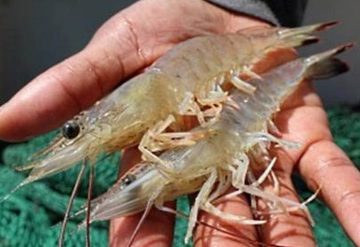 That is exactly how the 2016-17 commercial shrimping season in South Carolina state waters wound up earlier this week, at the end of January. The season typically closes by mid-January but excellent catches of jumbo shrimp by trawlers kept it open later. “I’ve had people tell me they’ve never seen big shrimp like this out there this time of year,” Mel Bell, Director of the Office of Fisheries Management for the South Carolina Department of Natural Resources, said on Thursday. “It’s been an unusual close to the season. It’s normally closed by mid-January, and if it’s a colder winter, maybe earlier. “We’ve never seen that phenomenon of those large shrimp offshore. I’ve talked to fishermen who have been in the industry for decades and they’ve never seen anything like that.” Read the story here 18:07
That is exactly how the 2016-17 commercial shrimping season in South Carolina state waters wound up earlier this week, at the end of January. The season typically closes by mid-January but excellent catches of jumbo shrimp by trawlers kept it open later. “I’ve had people tell me they’ve never seen big shrimp like this out there this time of year,” Mel Bell, Director of the Office of Fisheries Management for the South Carolina Department of Natural Resources, said on Thursday. “It’s been an unusual close to the season. It’s normally closed by mid-January, and if it’s a colder winter, maybe earlier. “We’ve never seen that phenomenon of those large shrimp offshore. I’ve talked to fishermen who have been in the industry for decades and they’ve never seen anything like that.” Read the story here 18:07
National Fisheries Institute bristles at comments by Canada’s fisheries minister
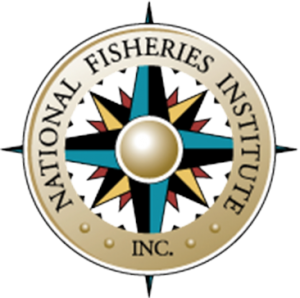 An American seafood industry association is disputing statements by Canada’s fisheries minister that Canadian producers need to “raise their game” in order to meet new traceability rules for seafood imported into the U.S. The Washington-based National Fisheries Institute, which opposes the new rules, says Canada has nothing to do with the illegal, unreported and unregulated (IUU) catches the new Seafood Import Monitoring Program was brought in to stop. The institute was reacting to a CBC News report where federal Fisheries Minister Dominic LeBlanc called increased traceability “very laudable,” even if Canada was not the target. He said Canada has been working with the U.S. government for months on this issue. “We need to raise our game to ensure that the Americans receive the evidence they require that our fisheries are compliant, as they are,” LeBlanc said. That statement put LeBlanc offside with the National Fisheries Institute, which is part a powerhouse lawsuit launched last month to block the Seafood Import Monitoring Program brought in by the former Obama administration in December. Read the story here 15:00
An American seafood industry association is disputing statements by Canada’s fisheries minister that Canadian producers need to “raise their game” in order to meet new traceability rules for seafood imported into the U.S. The Washington-based National Fisheries Institute, which opposes the new rules, says Canada has nothing to do with the illegal, unreported and unregulated (IUU) catches the new Seafood Import Monitoring Program was brought in to stop. The institute was reacting to a CBC News report where federal Fisheries Minister Dominic LeBlanc called increased traceability “very laudable,” even if Canada was not the target. He said Canada has been working with the U.S. government for months on this issue. “We need to raise our game to ensure that the Americans receive the evidence they require that our fisheries are compliant, as they are,” LeBlanc said. That statement put LeBlanc offside with the National Fisheries Institute, which is part a powerhouse lawsuit launched last month to block the Seafood Import Monitoring Program brought in by the former Obama administration in December. Read the story here 15:00
Australian shark fin export sales showing signs of recovery
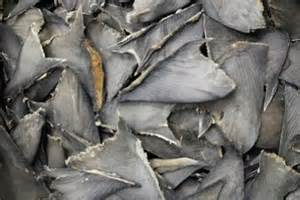 A West Australian seafood exporter says sales of shark fins are finally starting to pick up again, after a strong push from environmental groups to ban the global shark fin trade hit the industry hard. The long-standing calls from environmental groups stem from a concern of the sustainability of shark stocks and the prevalence of illegal finning. But fish processor Adam Soumelidis, who runs Great Southern Seafoods in Albany on the south-coast of Western Australia, said Australia had been unfairly dragged down in the bad press on shark fishing. He said while it was a relief that sales were recovering, industry needed to lobby more to make sure fin sales stayed afloat. “Now we’re just slowly, slowly starting to filter in through into the market.” Mr Soumelidis attributed the gradual increase to a better understanding of Australian fishing regulations. “Our practices aren’t like the rest of the world. We don’t fin the sharks and throw them back in,” he said. “Our practices are the whole fish comes in and it gets used. Read the story here 14:36
A West Australian seafood exporter says sales of shark fins are finally starting to pick up again, after a strong push from environmental groups to ban the global shark fin trade hit the industry hard. The long-standing calls from environmental groups stem from a concern of the sustainability of shark stocks and the prevalence of illegal finning. But fish processor Adam Soumelidis, who runs Great Southern Seafoods in Albany on the south-coast of Western Australia, said Australia had been unfairly dragged down in the bad press on shark fishing. He said while it was a relief that sales were recovering, industry needed to lobby more to make sure fin sales stayed afloat. “Now we’re just slowly, slowly starting to filter in through into the market.” Mr Soumelidis attributed the gradual increase to a better understanding of Australian fishing regulations. “Our practices aren’t like the rest of the world. We don’t fin the sharks and throw them back in,” he said. “Our practices are the whole fish comes in and it gets used. Read the story here 14:36

REWARD!! Michigan DNR Offers Big Reward For Plan To Block Invasive Fish
If the fishing world had a most-wanted list, Asian carp surely top it. There are plenty of despised invasives plaguing U.S. waters, but how many of them have a $1 million dollar bounty on their heads? That’s what the Michigan Department of Natural Resources just dropped on the table. Show the agency a viable plan for stopping those silver and big head carp from reaching the Great Lakes and you could be eligible for a sweet payday. In case you haven’t already heard the tale, Asian carp are prolific breeders that can reach 50-pounds. The filter-feeding invasives consume massive amounts of the tiny plants (phytoplankton) and animals (zooplankton) that feed native forage species, along with juvenile sport fish such as walleye and yellow perch. Disrupting the food web can wreak havoc on local fisheries. Read the story here with link to DNR 12:21
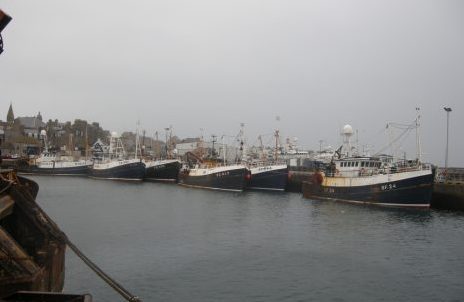
Fishing industry warns against “trading away” rights in Brexit negotiations
The Scottish Fishermen’s Federation says there must be “no trading away” of UK fishing rights amid the Brexit process. It comes after yesterday’s white paper on leaving the EU was published. It shows in 2015, EU skippers caught over six times more fish in UK waters than British fishermen caught in Europe. The government paper also makes mention of a “mutually beneficial deal” for both parties post-Brexit. Bertie Armstrong, chief executive of the Scottish Fishermen’s Federation, said: “The Scottish Fishermen’s Federation welcomes the Prime Minister’s stated approach to the Brexit negotiations as one of anticipating success. Delivery of the White Paper vision of a world leading food industry is an ambition fully shared by the fishing sector. Read the story here 11:15
Louisiana crabber busted twice with too many young females
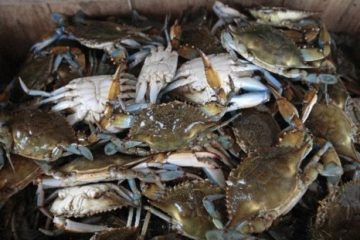 A Violet commercial crabber failed to heed a warning about harvesting immature female crabs , and that resulted in a citation that could put him in jail for up to 60 days, the Louisiana Department of Wildlife and Fisheries reported Thursday. On Jan. 20, enforcement agents say they found Allan Campo, 51, to be in violation of the state’s new crabbing regulations, and issued him a written warning. Less than two weeks later, however, agents were on patrol in Plaquemines Parish’s Shell Lake when they observed Campo actively crabbing, the department said. The agents stopped Campo, and found him to be in possession of two crates of crabs holding an illegal amount of immature female crabs, according to the department. Under new regulations, no more than 2 percent of a commercial crabber’s take may be immature females. Read the story here 10:48
A Violet commercial crabber failed to heed a warning about harvesting immature female crabs , and that resulted in a citation that could put him in jail for up to 60 days, the Louisiana Department of Wildlife and Fisheries reported Thursday. On Jan. 20, enforcement agents say they found Allan Campo, 51, to be in violation of the state’s new crabbing regulations, and issued him a written warning. Less than two weeks later, however, agents were on patrol in Plaquemines Parish’s Shell Lake when they observed Campo actively crabbing, the department said. The agents stopped Campo, and found him to be in possession of two crates of crabs holding an illegal amount of immature female crabs, according to the department. Under new regulations, no more than 2 percent of a commercial crabber’s take may be immature females. Read the story here 10:48
Alaskans should have the final say on Pebble Mine – Sharon and Everett Thompson of Naknek, Alaska,
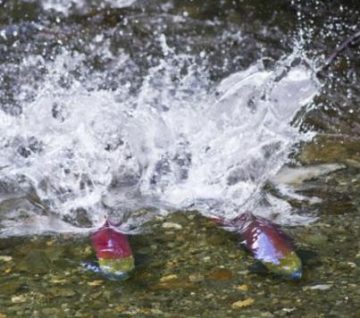 Pebble Mine’s Canadian, would-be developers are ecstatically peddling a story that their mine’s approval is certain. A new Trump Administration, “desires to see Pebble permitted,” Northern Dynasty’s chief executive said Monday. Because of this, investors are piling on, sending the Northern Dynasty stock soaring in recent weeks. All of these outsiders have forgotten one thing: the Pebble Mine is proposed in Bristol Bay, Alaska, not the South Lawn of the White House. Bristol Bay supports the world’s largest run of sockeye salmon that sustains local communities, businesses and the regional economy. Alaskans hate the proposal despite “alternative facts” being pushed by Northern Dynasty in recent days claiming local support. Let the record show that 80 percent of Bristol Bay residents have said clearly that they don’t want the mine. Statewide, 65 percent of residents have said “no mine.” Read the op-ed here The notion that the Trump Administration will approve Pebble is shear speculation on the part of Northern Dynasty. Read the story here 09:22
Pebble Mine’s Canadian, would-be developers are ecstatically peddling a story that their mine’s approval is certain. A new Trump Administration, “desires to see Pebble permitted,” Northern Dynasty’s chief executive said Monday. Because of this, investors are piling on, sending the Northern Dynasty stock soaring in recent weeks. All of these outsiders have forgotten one thing: the Pebble Mine is proposed in Bristol Bay, Alaska, not the South Lawn of the White House. Bristol Bay supports the world’s largest run of sockeye salmon that sustains local communities, businesses and the regional economy. Alaskans hate the proposal despite “alternative facts” being pushed by Northern Dynasty in recent days claiming local support. Let the record show that 80 percent of Bristol Bay residents have said clearly that they don’t want the mine. Statewide, 65 percent of residents have said “no mine.” Read the op-ed here The notion that the Trump Administration will approve Pebble is shear speculation on the part of Northern Dynasty. Read the story here 09:22
Our view: Adjust beach replenishment to minimize maritime dead zones
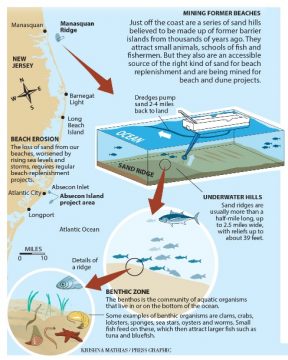 Beach replenishment is an expensive and temporary method of maintaining barrier-island beaches. In the absence of alternatives — and many have been tried in vain — state and local governments and most of society are committed to pumping sand from the ocean floor for the foreseeable future. As the post-Hurricane Sandy rebuilding of all the beaches along New Jersey’s 127-mile Atlantic coast nears completion, an additional potential cost is becoming clear: Replenishment might be creating dead zones on land and at sea. That’s not sufficient reason to stop sand dredging (without a new and better option), but it’s worrisome enough that governments should adjust their practices and possibly even their funding mechanisms. Governments are planning to continue dredging ocean sand onto beaches for at least another half-century, so there is a danger it will create enough dead-zone acreage to adversely affect the richly complex coastal web of life. Recreational and commercial fishers say it already is. Read the op-ed here 08:34
Beach replenishment is an expensive and temporary method of maintaining barrier-island beaches. In the absence of alternatives — and many have been tried in vain — state and local governments and most of society are committed to pumping sand from the ocean floor for the foreseeable future. As the post-Hurricane Sandy rebuilding of all the beaches along New Jersey’s 127-mile Atlantic coast nears completion, an additional potential cost is becoming clear: Replenishment might be creating dead zones on land and at sea. That’s not sufficient reason to stop sand dredging (without a new and better option), but it’s worrisome enough that governments should adjust their practices and possibly even their funding mechanisms. Governments are planning to continue dredging ocean sand onto beaches for at least another half-century, so there is a danger it will create enough dead-zone acreage to adversely affect the richly complex coastal web of life. Recreational and commercial fishers say it already is. Read the op-ed here 08:34
Domoic Acid raises its ugly head again…crab fishing closure
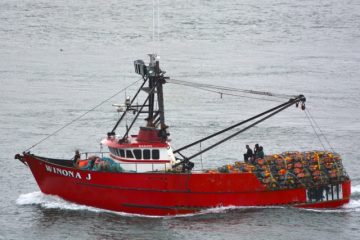 Commercial crabbing closed from Coos Bay north jetty to Heceta Head due to domoic acid The Oregon Department of Agriculture and the Oregon Department of Fish and Wildlife announce the closure of the commercial crab fishery from the north jetty of Coos Bay to Heceta Head, just south of Yachats, due to elevated levels of domoic acid in crab viscera. The area is also closed to recreational harvest. Crab meat remains safe for consumption. Domoic acid levels are elevated only in crab viscera, or the guts, of crab sampled and tested from this area of the Oregon coast. The closure is limited to that portion of the central coast. Areas south of Coos Bay and north of Heceta Head remain open to commercial crabbing. Read the story here 07:38
Commercial crabbing closed from Coos Bay north jetty to Heceta Head due to domoic acid The Oregon Department of Agriculture and the Oregon Department of Fish and Wildlife announce the closure of the commercial crab fishery from the north jetty of Coos Bay to Heceta Head, just south of Yachats, due to elevated levels of domoic acid in crab viscera. The area is also closed to recreational harvest. Crab meat remains safe for consumption. Domoic acid levels are elevated only in crab viscera, or the guts, of crab sampled and tested from this area of the Oregon coast. The closure is limited to that portion of the central coast. Areas south of Coos Bay and north of Heceta Head remain open to commercial crabbing. Read the story here 07:38
Commission Cuts Summer Flounder leaving New Jersey leaders fuming
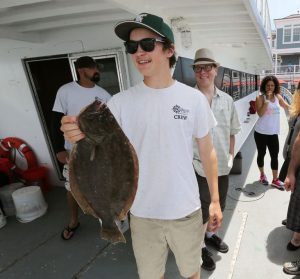 The Commission voted Thursday to reduce this year’s summer flounder catch, leaving New Jersey leaders fuming and vowing to take action. It’s a move many in the state believe could devastate the recreational fishing industry at the Jersey Shore by tightening size and bag limits on the fish.,,At its meeting in Virginia, the Atlantic States Marine Fisheries Commission chose Option 5, which implements reductions between 28 percent and 32 percent the length of the coast. All other options included in the plan would have mandated a 41 percent cut. Federal experts have argued the reductions are necessary to preserve the stock. At a public hearing last month in Galloway Township, Kirby Rootes-Murdy, a senior fishery management plan coordinator at ASMFC, said the flounder stock is in “an overfishing situation.” Read the story here 21:00
The Commission voted Thursday to reduce this year’s summer flounder catch, leaving New Jersey leaders fuming and vowing to take action. It’s a move many in the state believe could devastate the recreational fishing industry at the Jersey Shore by tightening size and bag limits on the fish.,,At its meeting in Virginia, the Atlantic States Marine Fisheries Commission chose Option 5, which implements reductions between 28 percent and 32 percent the length of the coast. All other options included in the plan would have mandated a 41 percent cut. Federal experts have argued the reductions are necessary to preserve the stock. At a public hearing last month in Galloway Township, Kirby Rootes-Murdy, a senior fishery management plan coordinator at ASMFC, said the flounder stock is in “an overfishing situation.” Read the story here 21:00
Pallone Opposes Cuts to Summer Flounder Quotas at Atlantic States Marine Fisheries Commission meeting
 Today, at the Atlantic States Marine Fisheries Commission, a spokesperson for Congressman Frank Pallone, Jr. (NJ-06) provided a statement arguing that proposed reductions for Summer Flounder quotas would harm many coastal communities including those along the Jersey Shore that rely on the recreational and commercial fishing industries. The Commission, despite opposition by New Jersey representatives, elected to finalize regulations that will result in a 34% cut in summer flounder quotas for the state. The bag limit will decrease to 3 fish, and the minimum size will increase one inch to 19 inches on the New Jersey coast and 18 inches in Delaware Bay. The recreational and commercial limits would both be reduced by approximately 30% in 2017 and 16% in 2018. Read the press release here 18:57
Today, at the Atlantic States Marine Fisheries Commission, a spokesperson for Congressman Frank Pallone, Jr. (NJ-06) provided a statement arguing that proposed reductions for Summer Flounder quotas would harm many coastal communities including those along the Jersey Shore that rely on the recreational and commercial fishing industries. The Commission, despite opposition by New Jersey representatives, elected to finalize regulations that will result in a 34% cut in summer flounder quotas for the state. The bag limit will decrease to 3 fish, and the minimum size will increase one inch to 19 inches on the New Jersey coast and 18 inches in Delaware Bay. The recreational and commercial limits would both be reduced by approximately 30% in 2017 and 16% in 2018. Read the press release here 18:57
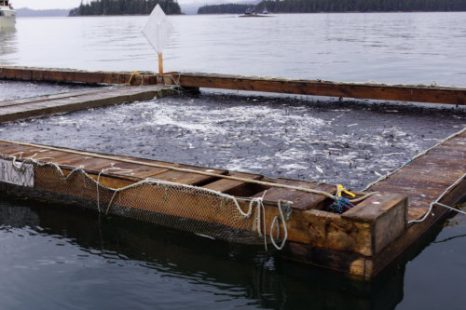
Fishermen forced to share spawning pounds in spawn-on-kelp herring fishery
The spawn-on-kelp fishery allows fishermen to catch herring near Craig and Klawock and put them into floating net pens called pounds. Blades of kelp are also put in there for the herring to spawn on. The eggs are then sold to Asian markets. Scott Walker is the Area Management Biologist for the Alaska Department of Fish and Game in Ketchikan. He’s been helping manage the spawn-on-kelp fishery since it began in 1992. “We have been seeing throughout Southeast Alaska right now a downturn of herring stocks,” Walker said. In the past the fishermen were restricted by the number of blades of kelp they were allowed to use in their pounds. Now, fishermen will also be forced to share a pen with at least five other permit holders. The effort will mean less pounds being used, which is what the state is after, says Walker. Last year 46 structures were fished, the year before it was 76. This year it’s limited to 20 pens. Audio report, read the story here 16:26
New scientific paper throws conventional thinking about minimum sizes for fish out the window
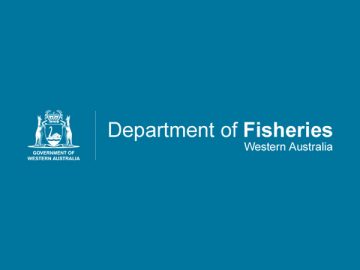 At last, after decades of so-called reviews of minimum sizes which have basically just fiddled at the edges, an Australian fisheries management authority has finally fundamentally questioned and analysed the use of minimum sizes as an effective tool for sustainable fish species management. Our friends in WA have issued Fisheries Management Paper No. 279; Policy on the Application of Fish Size Limits in Western Australia. In eight concise pages it addresses one of the oldest types of management tools used in fisheries, the setting of minimum size limits for all popular species targeted by recreational and commercial fishers. It concludes that often setting these limits is a waste of time. The Policy has then been used as the basis of the subsequent Fisheries Management Paper No. 280 which outlines proposals for reviewing the appropriateness of all current size limits that apply to finfish species in WA. Read the story here 16:03
At last, after decades of so-called reviews of minimum sizes which have basically just fiddled at the edges, an Australian fisheries management authority has finally fundamentally questioned and analysed the use of minimum sizes as an effective tool for sustainable fish species management. Our friends in WA have issued Fisheries Management Paper No. 279; Policy on the Application of Fish Size Limits in Western Australia. In eight concise pages it addresses one of the oldest types of management tools used in fisheries, the setting of minimum size limits for all popular species targeted by recreational and commercial fishers. It concludes that often setting these limits is a waste of time. The Policy has then been used as the basis of the subsequent Fisheries Management Paper No. 280 which outlines proposals for reviewing the appropriateness of all current size limits that apply to finfish species in WA. Read the story here 16:03
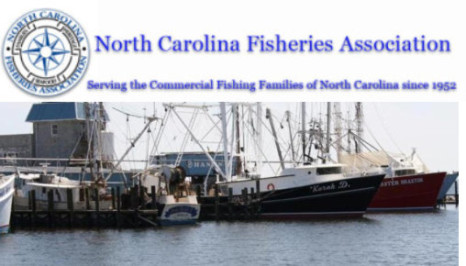
North Carolina Fisheries Association Weekly Update for January 30, 2017
Click here to read the Weekly Update, to read all the updates, Click here 14:30
Bay of Fundy Fishermen trying to overturn approval of tidal turbine
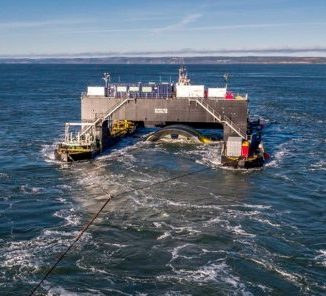 A fishermen’s group has asked the Nova Scotia Supreme Court to set aside provincial approval of a massive tidal turbine in the Bay of Fundy, saying the decision was based on poor scientific data. The 1,000-tonne underwater generator was installed on the floor of the Minas Passage in November, but the Bay of Fundy Inshore Fishermen’s Association has said the test project should be put on hold to ensure the bay’s productive ecosystem is not harmed. David Coles, the lawyer representing the 175-member association, told the court Wednesday that Environment Minister Margaret Miller overstepped her authority last June because the company behind the project — Cape Sharp Tidal — did not submit enough scientific data about the state of the bay prior to installation. “The minister was required to consider certain things, and they’re just not in the record,” Coles told Justice Heather Robertson. Read the story here 14:07
A fishermen’s group has asked the Nova Scotia Supreme Court to set aside provincial approval of a massive tidal turbine in the Bay of Fundy, saying the decision was based on poor scientific data. The 1,000-tonne underwater generator was installed on the floor of the Minas Passage in November, but the Bay of Fundy Inshore Fishermen’s Association has said the test project should be put on hold to ensure the bay’s productive ecosystem is not harmed. David Coles, the lawyer representing the 175-member association, told the court Wednesday that Environment Minister Margaret Miller overstepped her authority last June because the company behind the project — Cape Sharp Tidal — did not submit enough scientific data about the state of the bay prior to installation. “The minister was required to consider certain things, and they’re just not in the record,” Coles told Justice Heather Robertson. Read the story here 14:07
Resolution Urges President Trump and U.S. Congress to Mitigate Harm to Alaska’s Fishing Industry Resulting from TPP Withdrawal
 Today, Senator Bill Wielechowski (“While I did not support the TPP,,,! D-Anchorage) introduced Senate Joint Resolution 3 (SJR3) urging President Donald Trump, and the U.S. Congress to take action to mitigate the harm caused to Alaska’s fishing industry as a result of the President’s announcement last week that the United States would withdraw from the Trans-Pacific Partnership Agreement (TPP). The TPP was a sweeping agreement which contained several provisions that could have been problematic to United States manufacture. The agriculture industry, however, including Alaskan seafood production, stood to benefit dramatically. According to a United States Department of Agriculture (USDA) report, the U.S. would have seen a 33% increase in intraregional exports, and a 5% increase in U.S. exports among TPP members. Read the rest here 12:39
Today, Senator Bill Wielechowski (“While I did not support the TPP,,,! D-Anchorage) introduced Senate Joint Resolution 3 (SJR3) urging President Donald Trump, and the U.S. Congress to take action to mitigate the harm caused to Alaska’s fishing industry as a result of the President’s announcement last week that the United States would withdraw from the Trans-Pacific Partnership Agreement (TPP). The TPP was a sweeping agreement which contained several provisions that could have been problematic to United States manufacture. The agriculture industry, however, including Alaskan seafood production, stood to benefit dramatically. According to a United States Department of Agriculture (USDA) report, the U.S. would have seen a 33% increase in intraregional exports, and a 5% increase in U.S. exports among TPP members. Read the rest here 12:39
Mint worker convicted of smuggling gold in rectum sentenced to 30 months
 Leston Lawrence, 35, made only a brief statement before a ruling from Ontario Justice Peter Doody. “I’d just like to say thank you, sir, and that’s it. No further comment.” After which, his puffy jacket still done up, he sat down in the front row. Lawrence was also ordered to repay $190,000, the true market value of the precious metal, which he sold at a discount. Lawrence, an operator in the Mint’s refinery section on Sussex Drive, was convicted Nov. 9 of stealing 22 gold “pucks” during a three-month period that began in December 2014, then reselling them and spending the proceeds. Though the method of escape was never proven, the Mint was satisfied Lawrence must have hidden the pucks — about the diameter of a golf gall — in his rectum as he exited the secure area after his shift. The theory was bolstered by the discovery of vaseline and latex gloves in his personal locker and the fact he set off an archway metal detector 28 times in 41 days, though no gold was ever found on his person. The Mint was so convinced this was the heist method that it had a security officer duplicate the crime. During the test, the first detector was set off but not the second, done with a hand-held device. Court was told that Lawrence was arranging to have a home built in Jamaica and had sent about $35,000 to a contractor in the Caribbean. He had also invested about $34,000 in a commercial fishing boat in Florida. Read the story here 10:26
Leston Lawrence, 35, made only a brief statement before a ruling from Ontario Justice Peter Doody. “I’d just like to say thank you, sir, and that’s it. No further comment.” After which, his puffy jacket still done up, he sat down in the front row. Lawrence was also ordered to repay $190,000, the true market value of the precious metal, which he sold at a discount. Lawrence, an operator in the Mint’s refinery section on Sussex Drive, was convicted Nov. 9 of stealing 22 gold “pucks” during a three-month period that began in December 2014, then reselling them and spending the proceeds. Though the method of escape was never proven, the Mint was satisfied Lawrence must have hidden the pucks — about the diameter of a golf gall — in his rectum as he exited the secure area after his shift. The theory was bolstered by the discovery of vaseline and latex gloves in his personal locker and the fact he set off an archway metal detector 28 times in 41 days, though no gold was ever found on his person. The Mint was so convinced this was the heist method that it had a security officer duplicate the crime. During the test, the first detector was set off but not the second, done with a hand-held device. Court was told that Lawrence was arranging to have a home built in Jamaica and had sent about $35,000 to a contractor in the Caribbean. He had also invested about $34,000 in a commercial fishing boat in Florida. Read the story here 10:26

































